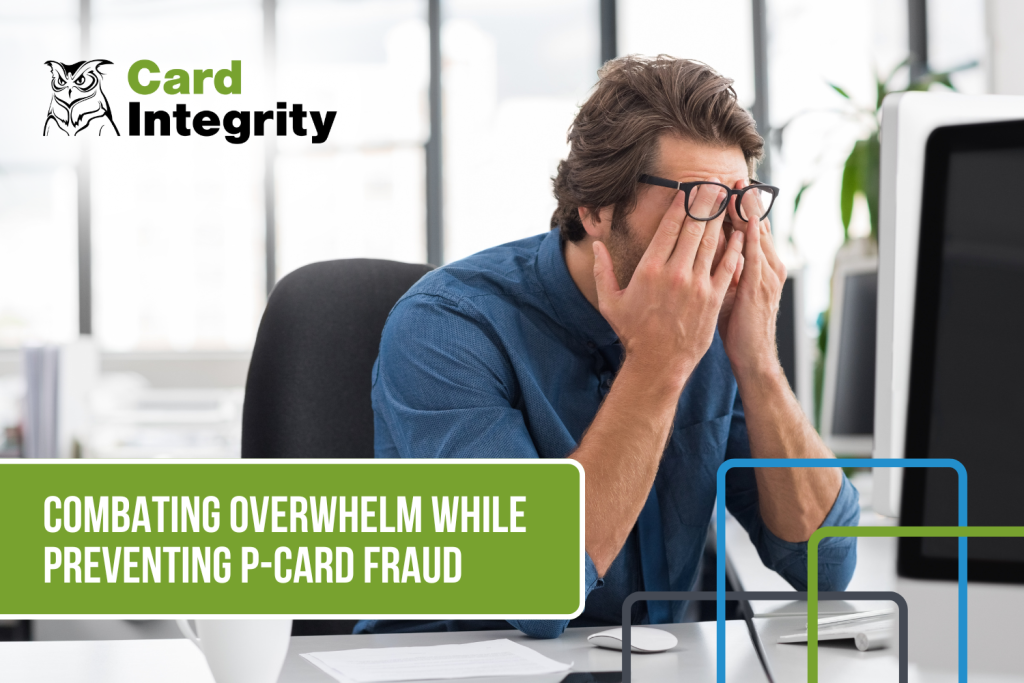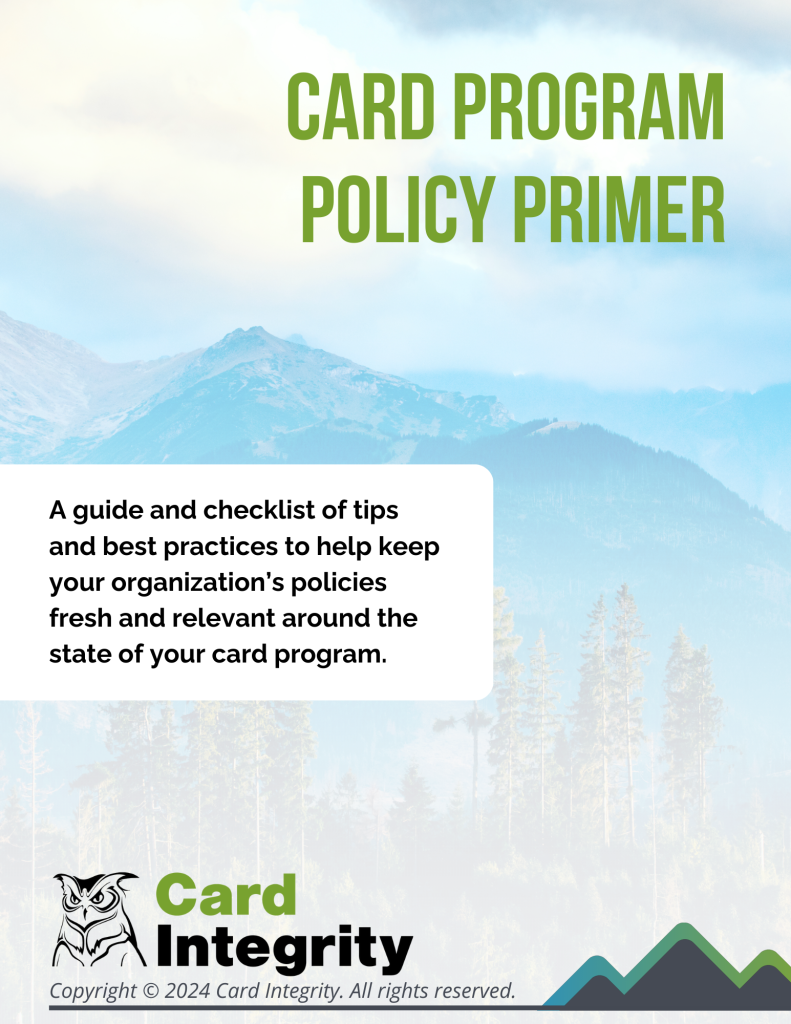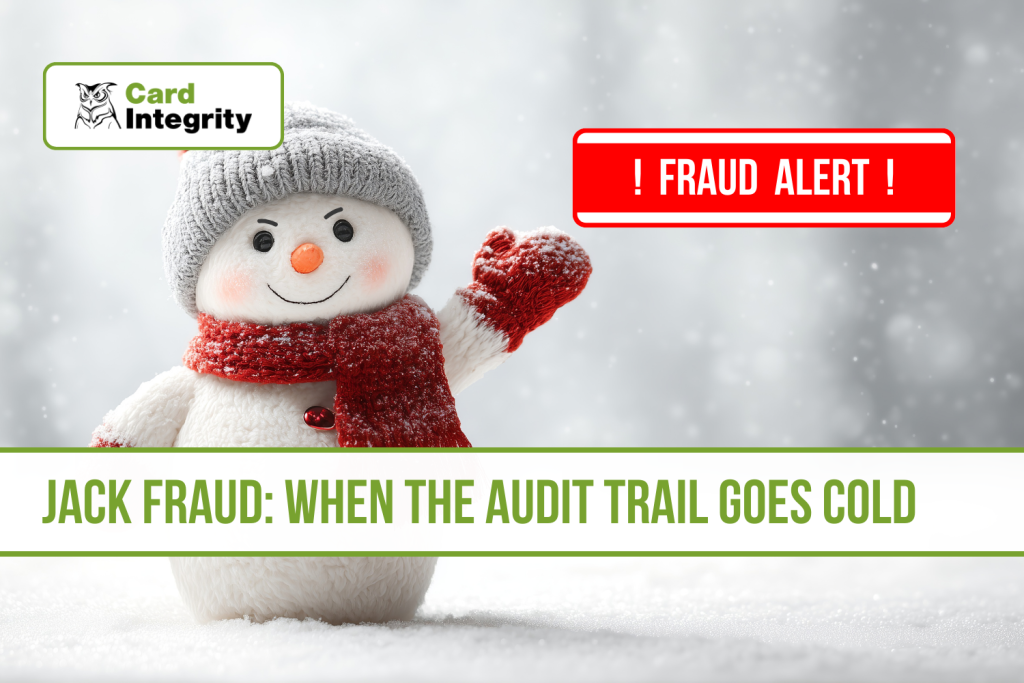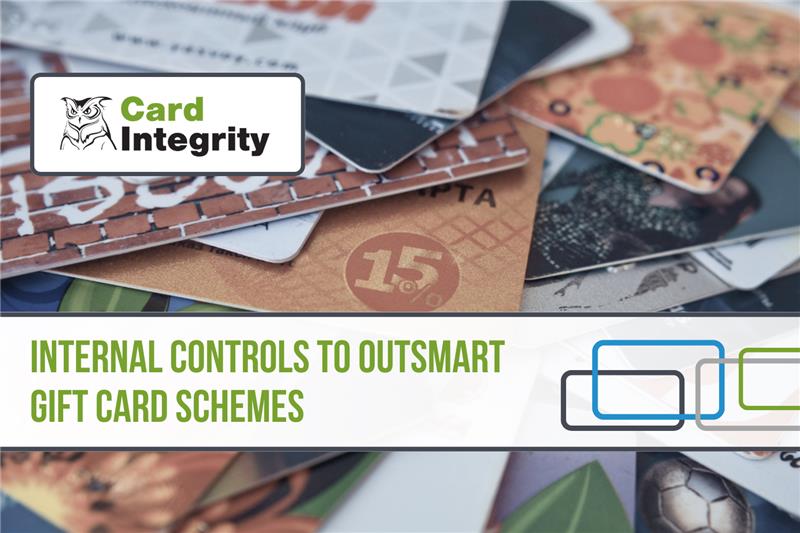Most folks would agree that preventing P-Card fraud in a company’s purchasing card program is a worthwhile pursuit. Yet, when faced with all the many duties that are involved with fraud prevention, managers can hit a proverbial brick wall.
And by the way, this goes for all commercial card types, including travel cards, OneCard, ProCard, and more. Any company-issued credit card is issued with a certain amount of understood risk. We’ll use the common catch-all term P-Card for the purposes of this blog post, but know that this applies to all commercial credit card types.
When it comes to P-Card fraud prevention, there’s much to oversee. Just look at this list of what management needs to do in an attempt to prevent P-Card fraud.
Some Necessary Steps for Effective P-Card Fraud Prevention
Creation and communication of policies and procedures
If you want to prevent fraud, you first have to determine what fraud looks like. To do so, policies and procedures as they relate to P-Card use have to first be created. This can take a tremendous amount of time and work, especially when you consider that all of it will most likely have to go through a rigorous approval process with various levels of command within a company. And not only that, but they need to be continuously updated too, to coincide with the everchanging landscape of a growing P-Card program. And the internal controls that are in place need to change and involve with that policy.
Beyond creation and updating, the policies and procedures have to then be communicated to both the P-Card holders and the management overseeing its use.
Appropriate training
One of the ways that these rules are communicated to cardholders is via training. But for appropriate, effective training to happen, time again needs to be devoted for development of the courses and then for the administration and teaching of the materials. Learn more about training.
Monitoring and reviewing transactions
Depending on your company and the use of your P-Cards, these transactions could number in the hundreds or in the thousands, or even in the tens of thousands, every single month. While a company might find it quite easy and simple to implement a P-Card, following up with this level of review can be extremely difficult. And yet, no one would say it wasn’t necessary, especially if you are under audit, or an auditor yourself, trying to prevent fraud in your system.
Analysis and reporting
Preventing P-Card fraud can’t stop with a review. The review is only one step in determining where and how fraud is occurring. What needs to be done in response to that review is in-depth data analysis and auditing to identify trends, recognition of fraud and opportunities for fraud, and action to put a stop to any fraud that is happening or that could happen.
If you think the review process takes time and energy, consider how much more thought and consideration must go into the analysis of all that reviewed data.
Of course, the audit and analysis means nothing if it’s not communicated to people who can help prevent the fraud. So the creation and distribution of the reports is also extremely important for fraud prevention.
Testing controls
When all is said and done, the trends that have been identified still have to be tested to ensure that fraud is actually being identified and properly dealt with. If the system is not revealing and preventing fraud, then it has to be examined and tweaked accordingly.
Assign these duties to SOMEONE.
None of the above steps and precautions work if someone isn’t assigned to do them. Employees — typically at the management level and without a doubt, more than just one — need to apply themselves to the actual work and responsibilities. And, they need to be accountable for the results.
In light of all these tasks, important questions have to be asked.
Are these responsibilities going to fall onto a manager who already has a job to do, which is full of its own tasks and priorities? Is hiring a new person (or better said, persons) to do these jobs feasible and realistic? How is any of this going to take place, given your current company resources? Or, will taking the steps to prevent fraud just fall by the wayside?
Frankly, this list just gives a “taste” of all the many duties that fall upon company management when trying to reign in P-Card fraud. It takes in so much more than these steps, but this list gives an overall picture of the most important steps that must be implemented in order to effectively prevent fraud within your P-Card program.
Avoidance, Procrastination, and Even Abandonment
Given this list… Is it any wonder that management gets overwhelmed when preventing P-Card fraud? None of this is for the faint of heart.
However, human nature being what it is, managers who feel overwhelmed by all the additional responsibilities might react by avoiding or even abandoning the most important tasks of fraud prevention.
Running away from the problem isn’t the right solution, but sometimes, for an overwhelmed manager, procrastinating while more important “priority” tasks are tended to might seem like the only solution available.
Manual Reviews Are NOT Enough… What About AI?
Making the situation worse is that—despite their best efforts—the manual processes actually performed by these managers to prevent fraud are simply not enough in many cases. There is too much data. And with the advent of artificial intelligence, you may feel pressure to introduce it into your card program in some capacity. Thankfully, there is a solution that combines both human review and artificial intelligence.
Solving the Feelings of Overwhelm Using Card Integrity
If your managers can’t handle all the tasks necessary for fraud prevention, what’s the answer?
A solution that integrates artificial intelligence and machine learning with third-party human expertise, such as Card Integrity’s expense monitoring service, is what’s needed to speed up reviews and keep pace with digital transactions.
As noted in the list, there’s much more involved in fraud protection than just speedy transaction reviews. Fortunately, in that regard, Card Integrity offers much more than just a software tool to its clients.
It’s also a service, combining data review with financial expertise, to deliver the highest level of data analysis aimed specifically at preventing P-Card fraud. Card Integrity’s financial and purchasing professionals tailor reports according to your P-Card programs polices and procedures.
They also assist with report distribution and communicate important findings to other department heads. And through our online card policy training service, Card Integrity can handle all of the responsibilities that go along with informing and training employees to fully understand the policies and procedures developed by the company. In fact, Card Integrity can even help with that development as well.
Imagine ALL of the new responsibilities necessary for a safe and efficient P-Card program being handled off-site by financial experts who fully know and understand what to look for in preventing fraud. What would saving that sort of time and all those resources mean for your company and for your P-Card program?
The End Results
What would be the end result for your management if you used Card Integrity’s solutions for preventing P-Card fraud? It would mean the shortening of or even eliminating their time spent on transaction reviews, analysis, reporting, communicating, and training. The end result for your P-Card program? Putting into place the most competent, effective means of addressing and reducing fraud — what every P-Card system needs, but might not have.
No doubt about it — fraud prevention is a must. But so are all the steps in making it happen. To avoid overwhelming your management and your company with new but necessary responsibilities (and the risk that they just won’t get done), calling upon the assistance of the Card Integrity experts and solutions makes the utmost sense.
Waiting won’t make the responsibilities any easier or make the fraud go away. So take the most important step — contact Card Integrity today.
Prime Yourself to Prevent Fraud
Card Integrity has prepared our free Policy Primer for your review. It’s a great first step if you’re trying to find areas to improve or update your policy. You can download it for free by filling out the form below.
Blog post originally published on August 29, 2017. Updated August 7, 2024.




